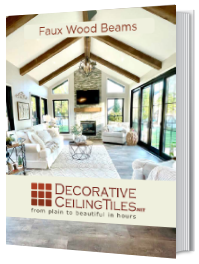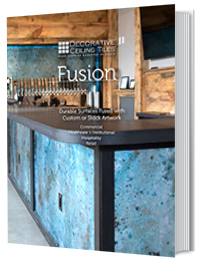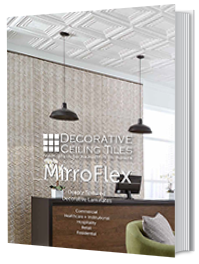Kitchen Crown Molding: Thinking Outside the Norm
Written by Milan Jara on 17th Nov 2022

We explore incorporating kitchen crown molding while providing outside-the-box methods to rejuvenate your space.
The kitchen is said to be the heart of the home. It is where we prepare food, cook, eat, and do life together. While kitchen crown molding can create a cohesive look with the remainder of the house, other ideas are out there. We discuss both the known and untapped areas.
Uses for Kitchen Crown Molding
There are many uses for kitchen crown molding other than finishing the kitchen. While this may be the primary goal of incorporating it into your design, there are other functions and ways to finish off a kitchen by incorporating it into your décor. Different types of crown molding can provide a distinct flair to your space.
We discuss many popular styles, inspiring you on how to best incorporate crown molding into your eating space.
Adding or Highlighting Depth

Crown molding can highlight certain spaces in your kitchen. You can use it to highlight elevated areas, providing depth or interest to the room or even outline a box or drop-down area to highlight a particular space like an island or divider. You can also use it in conjunction with coffered ceilings.
Stepped Crown

Stepped kitchen cabinet crown molding is currently trending in many custom kitchens. Also referred to as staggered molding, it refines and accentuates a kitchen cabinet arrangement. Visually, it appears as if the kitchen cabinetry is “stepping” to the ceiling, creating a more graduated, dramatic appearance. This type is best for more contemporary or modern-style kitchens.
Traditional Crown Molding
Traditional crown molding on top of cabinets draws the eye upward and provides elegance to your kitchen. This type of molding is applied to the tops of kitchen cabinetry. If the cabinets don’t reach the ceiling or there is a gap, you can place them above the kitchen cabinet to finish the look.
Riser Molding
Some homes contain space between ceilings and cabinetry. While some owners use it to display decorations or special pieces, some see it as wasted space. In this case, you can apply riser crown molding to eliminate the gap between this area and use it as the only crown molding applied in the kitchen. This kitchen cabinet molding connects the ceiling seamlessly to the cabinetry and makes a showpiece of otherwise wasted space.

Minimal Crown
Best used for contemporary or minimalistic styles of kitchens, minimal molding elevates and refines the area. People appreciate the molding's clean lines, which finish the room without being too flashy or attention-seeking.
When used strategically, it allows you to highlight other areas of your kitchen instead of having the crown molding being the focal point.
Dentil Crown Molding
You can use dentil crown molding to decorate countertops or place it around doors and ceilings. Each piece is individually cut using precise measurements for a perfect fit.
Stacked Crown
To create this appearance, use multiple pieces of crown molding and stack them to provide a more uniform look. This is ideal for areas with high ceilings over eight feet tall.
It serves a functional and decorative purpose when placed on the upper cabinet. This molding can fill in gaps between ceilings and cabinetry to provide a cohesive, flush appearance.
Light Crown Molding
This type of molding is all about placement. It rests at the wall cabinet base to conceal lighting. Light crown molding provides a finishing touch while covering the light fixtures found beneath. This provides a solution that is both beautiful and functional.
Edge Crown Molding
You can use edge crown molding for all your cabinets or shelves. It is used as an add-on for the borders of these areas to provide character to the area.
Scribe Molding
If gaps are found between walls and cabinets, scribe molding can create a more cohesive yet concealing look. It is notably used to cover gaps and hide inconsistencies to provide a smoother look. It updates an aged room and conceals imperfections.
Corner Crown Molding
Using corner molding, you can hide imperfections on rough cabinets or counter edges. It can be applied to generate a more polished appearance instead of exposing the raw edges.
Molding for Chair Rails or Wainscoting

You can incorporate both aspects into a kitchen for different reasons. Wainscoting can create a country charm to a space or generate a more vintage appeal. This design partially goes up a wall and is capped using crown molding. While the crown molding’s primary purpose is decorative, it provides a nice flair to the room.
Chair rails, on the other hand, can be more functional. Traditionally used to hang chairs on or prevent them from dinging paint, they are often used for either a design element or the same functional purpose today. If your children or guests are prone to pulling chairs out too far, this element can save your walls and make them look good while doing it.
Final Thoughts
While kitchen crown molding can simply finish a room or provide a decorative element, you can also use it for so much more in terms of design elements. At a basic level, you can use it to provide cohesion between rooms or as a decorative element in their kitchen. Crown molding installation can elevate the look or enhance the atmosphere.
On the other hand, you can use crown molding on top of cabinets for a more cohesive appearance or hide the space between the upper cabinet and the ceiling. Some people like the added space, while others hate dusting an area that never gets used. You can also use it to hide imperfections.




